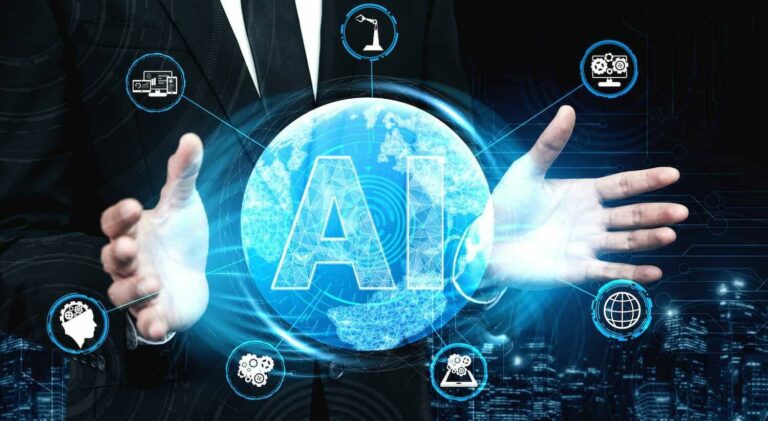It comes as no surprise, then, that education is one of the largest sectors for VR investment. Indeed, industry forecasts predict that VR in education will be a $700 million industry by 2025.
This research further encouraged the idea of ‘learning by doing’ which later came to be known as ‘Experiential Learning’ or ‘Action Learning’. Google LLC, EON Reality, Unimersiv, Alchemy Immersive, VRSim, Inc., Schell Games, Immersion VR, Mursion, zSpace, Inc., and Avantis Systems Ltd. are the top players in the market. The market is projected to grow at a CAGR of 30.7% during the forecast period. Discover learning management systems’ recommended features and the main factors to consider when selecting a suitable set.
Virtual Reality (VR) in Education Industry Segmentation
Recent technological advancements in this field have revealed new enterprises and adoption among major universities, colleges, and schools for advanced learning experiences. In addition, the market is expected to gain significant demand from corporations for corporate learning programs in the coming years. With its budget for virtual reality dedicated almost exclusively to classrooms, China isn’t playing any games when it comes https://www.globalcloudteam.com/ to VR. It rolled out its masterplan for VR development in 2019, and is determined to become a world leader in the industry. The technology has already been introduced to schools in China, where children can sit in pods and be educated by virtual tutors. Moving forward, China plans to create and introduce headsets into every classroom in the country, hoping to change the way the West sees ‘made in China’ for the better.
5 displays, most of the participants reported that IT specialists were available always (25%) or upon request (48%). Studies have estimated that, by 2024, the VR and AR industry will be worth approximately US$300 billion, which is almost 10 times the projection for the year 2021. While VR and AR are still heavily embedded in gaming, the EdTech industry comes a close second as, globally, governments and institutions are pushing for the use of technology in education. The market sizes and forecasts are provided in terms of value (USD million) for all the above segments. Training companies can also use extended reality in professional situations. Police departments are now using VR to train officers to deal with riots or arrest people in specific situations in an effort to make streets safer for citizens and officers alike.
Extended Reality In Education: The 5 Ways VR And AR Will Change The Way We Learn At School, At Work And In Our Personal Lives
The university has developed VR technology that allows students and researchers to virtually interact with the SARS-CoV-2 virus without exposing themselves to unnecessary danger. Additionally, NTU uses VR and AR to conduct lab classes, optometry modules, and anatomy simulation. The COVID-19 pandemic has also boosted the use of VR technologies, as seen in the case of Singapore.

VR field trips are becoming so popular in education because, in addition to providing immersive and engaging experiences, they’re also accessible. Not every student may be able to join their classmates for a real-world trip to a museum or another country, whether because of a disability or expense. Because they don’t require expensive transport and logistics, virtual field trips are more cost-effective for schools. From elementary school right up to university level, in lifelong learning and corporate training, extended reality technologies have the potential to make learning more effective, more engaging, and more relevant for today’s tech-driven world.
Virtual Reality (VR) in Education Market Leaders
Technology is changing the way students select universities and many schools have now started virtual reality campus tours as a way to connect with applicants on a wider scale. These campus ‘visits’ allow students to see what it would be like to attend universities in other cities and countries even if they can’t visit in person. An experiment carried out by Google’s Daydream labs found that people who got VR training learned faster and better than those who were merely shown video tutorials.
This is because newer technologies may lead to new needs for teachers’ preparation, their training, and their comfort with using the constantly-evolving VR equipment. These barriers can cause differences between teachers’ perceptions and their regular classroom technology practice. The majority of those teachers said the technologies have the potential to help students develop career skills, build social and empathy skills and stay more engaged and motivated in the classroom. Hardware segment dominated the market in 2022 with the highest market share. Moreover, as the price of VR systems falls and more people become interested in this new technology, adoption in the education sector is expected to grow. Moreover, Content is expected to showcase a highest CAGR as the increasing adoption of VR helps students to access virtual environments where they can engage in immersive content, potentially enhancing learning.
1 Study context
Apart from this, participants were also able to experience Imisi 3D’s VR through games and educational content and were asked to give their thoughts and opinions on the experience. To effectively use VR in the classroom, teachers should become familiar with the technology and understand how to integrate it into the curriculum. what is virtual reality in education Once they are confident with the VR technology, they will use it more creatively and frequently. It appears that most Russian teachers need professional development opportunities that can help them develop technological, pedagogical, and content knowledge (TPACK) beyond the basic technical knowledge about VR.
- On modern-day technologies such as AR and VR, which hold great potential in world of education.
- During the COVID-19 pandemic, Steven Hill, professor at the University of North Carolina at Chapel Hill, ditched Zoom lectures for a virtual 3D version of his classroom.
- Against this backdrop, AR in education is also gaining traction, proving to be a less expensive but an almost equally effective eLearning tool.
- 2 shows, most participants (71.7%) were at the first three stages of awareness (26.6%), learning (21.7%), and understanding (23.4%).
- Marianne Stenger is a London-based freelance writer and journalist with extensive experience covering all things learning and development.
- Virtual reality in education can be used in K-12 classrooms, for vocational training and in higher education settings.
Other uses of VR in K-12 education include language immersion and virtual lab simulation. Language immersion allows students to connect with people all over the world. On the other hand, virtual lab simulation gives STEM students the option of experimenting in million-dollar labs or mixing different chemicals in a virtual chemistry class without fear of blowing anything up in real life. And while there are plenty of active learning techniques to choose from, including simply asking students questions or arranging students for group work, more and more educators are seeing VR’s true potential.
Vocational training
List the available virtual reality equipment in your school (including labs and classes where applicable). These results were statistically significant but with weak positive correlations. A possible explanation for the weakness of the correlation is that the data set was mixed, and perhaps further analyses of specific parts of the data set can be a goal for future research. 4, there was also an excess mass of observations (62%) within the central portion of the distribution (see large circles). A little less than half of the participants (45%) indicated that they had balanced instructional approaches and experience with low level of VR integration (awareness, learning, and understanding). The Russian Federation has educational institutions in both public and private sectors.

One study conducted in a virtual world called Second Life allowed teachers to design, create and use collaborative activities to introduce exchange students to Chinese language and culture before they went abroad. The students showed improvements in key areas including reduced embarrassment when practicing their language skills and better social interactions between students. Innovations in VR-based assessment evaluation and personalized learning experiences are emerging, as a result of increased demand in the market. With the integration of advanced technologies such as artificial intelligence and machine learning, VR platforms are offering immersive and interactive assessment methods, enabling educators to evaluate students’ knowledge and skills in a more comprehensive and engaging manner. Virtual reality (VR) can be used in numerous ways in an educational setting.
Improved memory retention in VR education
In addition, the results provide useful insights into how to better prepare Russian teachers for effective VR integration into teaching and learning. Various definitions and classifications of VR exist, depending on the stage of its evolution. For example, Steuer (1992) defined VR as “a real or simulated environment in which a perceiver experiences telepresence” (p. 7). Generally, VR technology can be classified into low-immersion VR, which is experienced on a flat 2D monitor, and high-immersion VR where users wear a VR head-mounted headset to experience VR (see Fig. 1). The main distinguishing factor between the two types of VR is the level of immersion and the sense of presence. Wearing a VR headset requires users to disconnect from the real world, thus enhancing the immersion into the virtual environment (Kaplan-Rakowski & Gruber, 2021).
